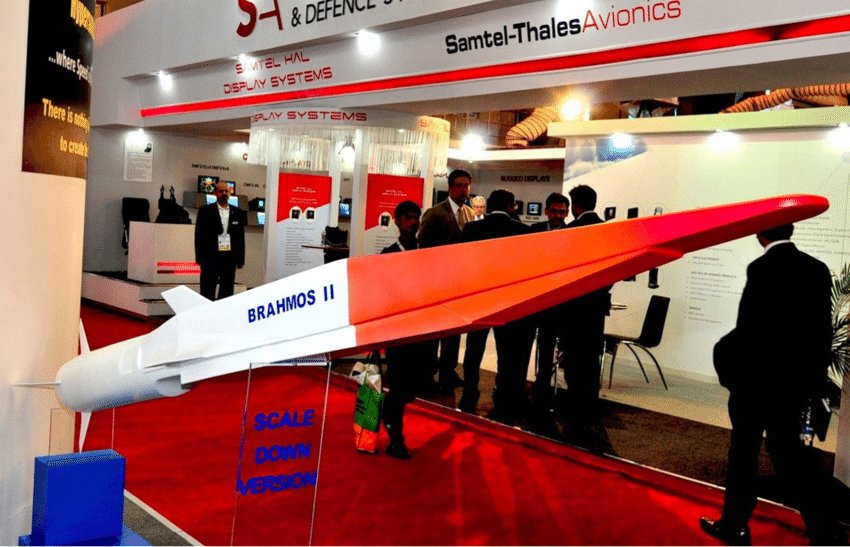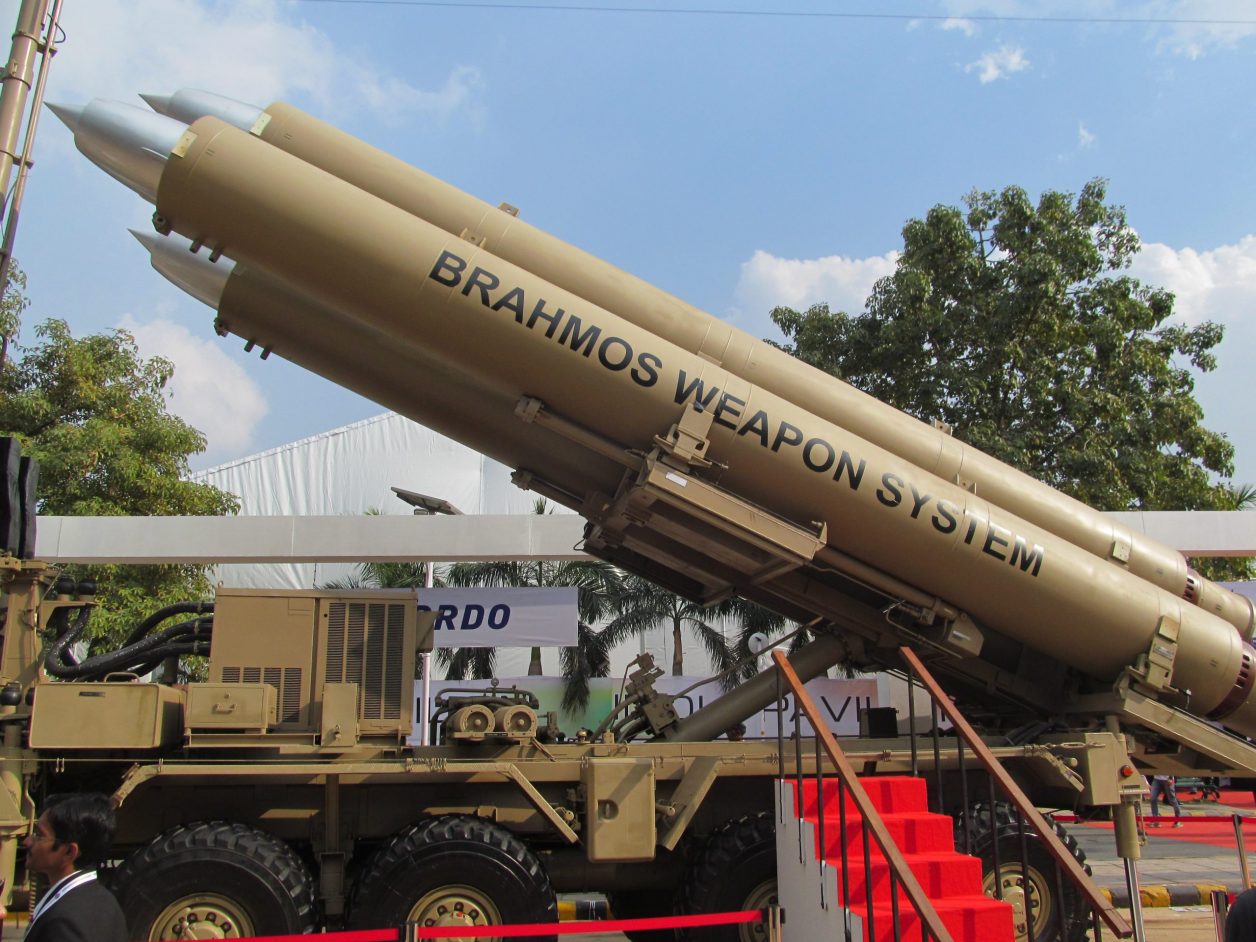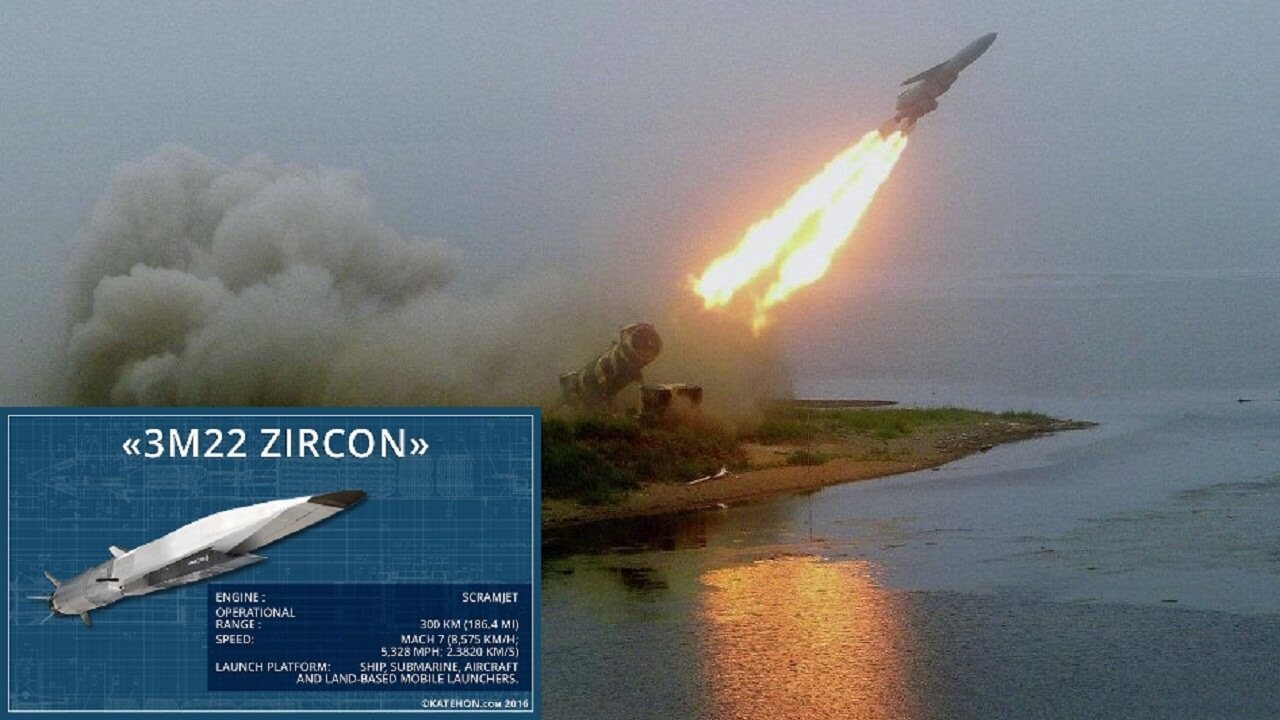The hypersonic version of India’s BrahMos cruise missile, the BrahMos-II, is likely to have the same performance characteristics as Russia’s Tsirkon (Zircon) missile, the CEO of BrahMos Aerospace, Atul Rane, told Russia’s state-owned TASS news agency on August 1.
China Puts Its J-20 Stealth Fighters In ‘Action Mode’ For The Very 1st Time; PLAAF Sends Dozens Of Warplanes Into Taiwan ADIZ
‘SPYCY’ War In Space! Russia Launches ‘Inspector’ Satellite Suspected Of Snooping On A US Spy Satellite
Brahmos Aerospace is a joint venture between India’s Defense Research and Development Organization (DRDO) and Russia’s NPO Mashinostroyenia, which develops and produces the BrahMos series of missiles.
The BrahMos-II hypersonic cruise missile is supposed to succeed the Indian Navy’s Brahmos Supersonic anti-ship cruise missile.
In August 2020, India test-fired its first indigenous Hypersonic Technology Demonstrator Vehicle (HSTDV), developed by the DRDO. According to Rane, it would take up to five or six years before the first flight trial of BrahMos-II could begin.
BrahMos II & Tsirkon May Share Technology
Rane said that both the Indian and Russian sides are working on the design of the hypersonic version. When asked by TASS whether the BrahMos-II would share some characteristics with Russia’s Tsirkon missile, Rane reportedly said it was “possible.”
“The whole world is working on a hypersonic cruise missile. The US and China are developing hypersonic versions of their cruise missiles. But they do not have them yet.
I have not seen anyone in the world having hypersonic cruise missiles. Russia says it tested the Tsirkon hypersonic antiship cruise missile developed by NPO Mashinostroeniya,” noted Rane.

As per the claims by President Putin, the Tsirkon missile is capable of attaining a speed of about Mach 9, and its maximum range could exceed 1,000 kilometers.
Last year, EurAsian Times also discussed the possibility of Tsirkon being a prelude to India’s BrahMos II hypersonic cruise missile, which is expected to develop a speed exceeding Mach 6, possibly reaching Mach 8, and have a range of 600 kilometers that could be extended to 1,000 kilometers.
However, it is essential to note that the Tsirkon missile can carry both conventional and nuclear warheads. In contrast, whether BrahMos II will be allowed to carry nuclear warheads remains unclear.
Hypersonic BrahMos II Missile Will Not Be Exported
Rane also said that the hypersonic version of the BrahMos missile would be costly and would not be exported, unlike the supersonic version sold to the Philippines in January.
Also, India is reportedly in the advanced stages of talks with Indonesia for the ship-borne variant of the cruise missile for its warships.

“We will not be able to export the Brahmos hypersonic version. It will only be produced for Russia and India,” Rane told TASS.
He explained that India is a party to the Missile Technology Control Regime (MTCR), which allows the country to develop a missile with a range of over 300 kilometers (186 mi) and a weight of more than 500 kilograms but not to export it to other countries.
This is true even in the case of the supersonic BrahMos missile, the latest variant of which has a range of 500 kilometers. The export version is capped at 290 kilometers to comply with the MTCR restrictions of 300 kilometers.
Russia Soon To Deploy Tsirkon Missiles
Meanwhile, the Russian-made Tsirkon missiles are set to enter the Russian military service before September. They will be first deployed on the Northern Fleet’s Admiral Gorshkov frigate, as per the announcement by President Putin on the occasion of Russia’s Navy Day on July 31.
In October 2021, Russia conducted the first tests of the Tsirkon hypersonic missile from the Northern Fleet’s Severodvinsk nuclear-powered submarine.

After that, in December 2021, President Putin announced that the Tsirkon hypersonic missile had completed the salvo launch.
The final test was carried out in May of this year, in which the missile was fired from the Admiral Gorshkov up to the maximum possible range of about 1,000 kilometers from the Barents Sea against a naval target in the White Sea.
While the missile tests were being carried out, the serial production of Tsirkon missiles had already commenced, according to the Russian media reports in November 2021.
The missile can reportedly evade the most sophisticated American air defense systems. Because of its tremendously high speed, the air pressure in front of the missile is said to create a plasma cloud that traps radio waves, making it near invisible to radar systems.
Admiral Gorshkov frigate launched a Tsirkon hypersonic missile in the White Sea.According to objective monitoring data, the Tsircon hypersonic missile successfully hit a coastal target located at a distance of over 350 kilometres. pic.twitter.com/7FCuMzqMqb
— Massimo Frantarelli (@MrFrantarelli) July 19, 2021
It is believed that the Tsircon missile can sink even the most advanced American aircraft carriers, and according to experts, it could easily defeat the US’ Aegis Combat System.
Only the aviation and sea-based variants of the Tsirkon are known to exist. However, Russia is also developing a new coastal missile system to launch the Tsircon missile that can hit both land-based and sea-based targets, according to a EurAsian Times report in May.
- Contact the author at tanmaykadam700@gmail.com
- Follow EurAsian Times on Google News




